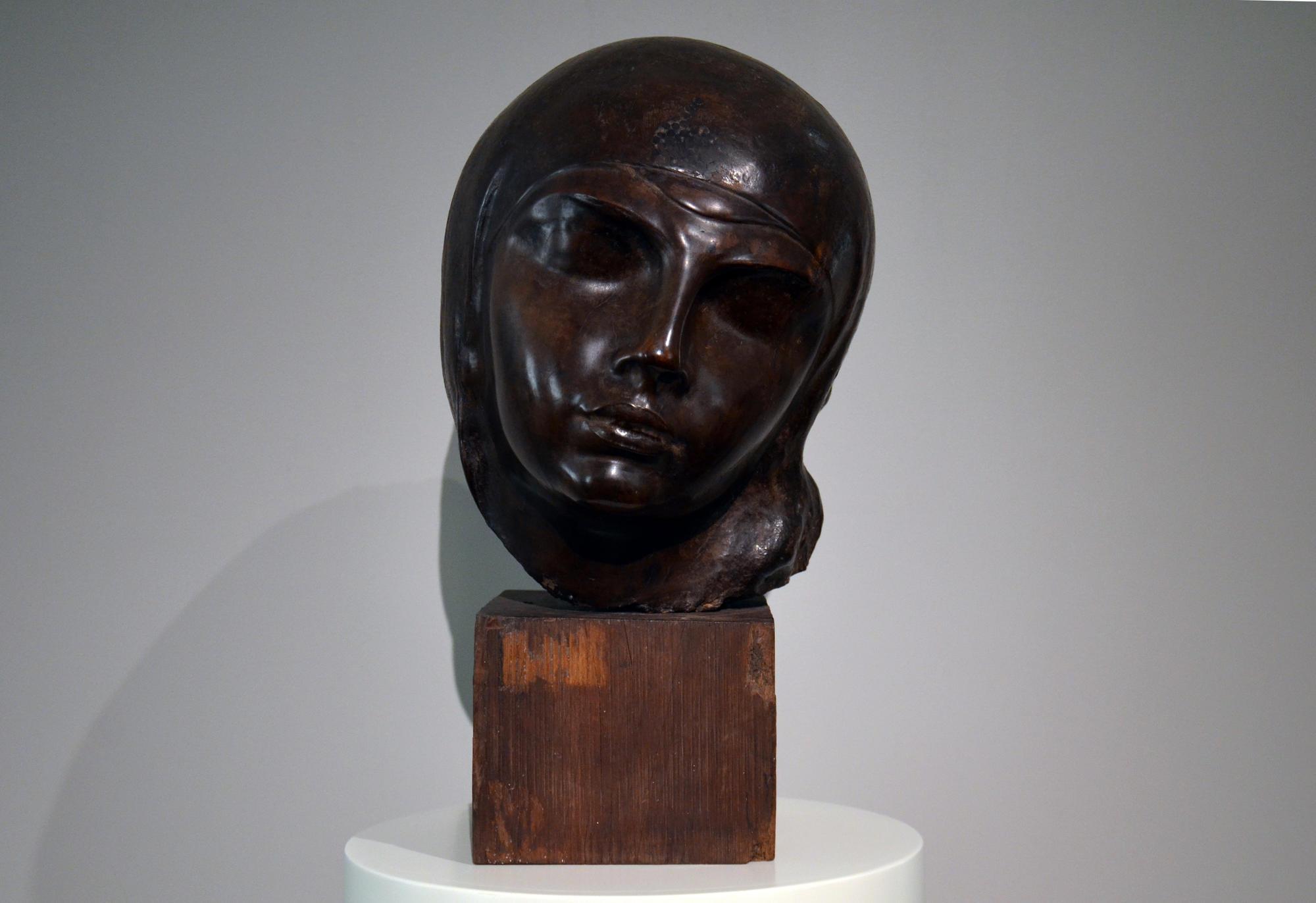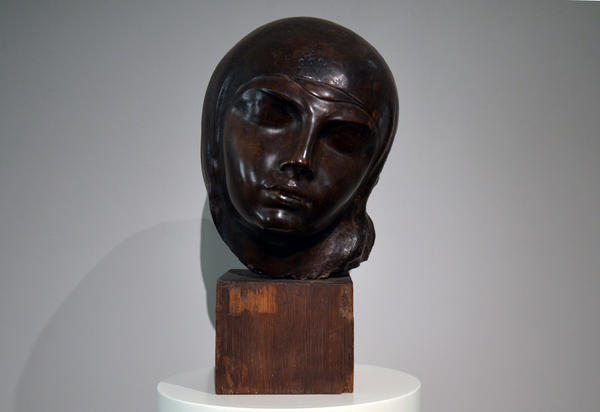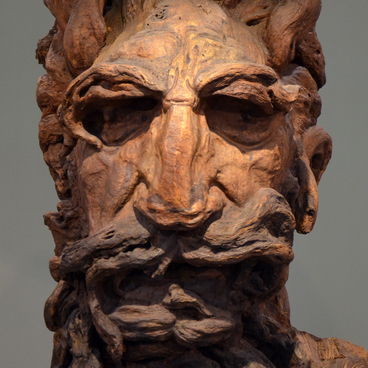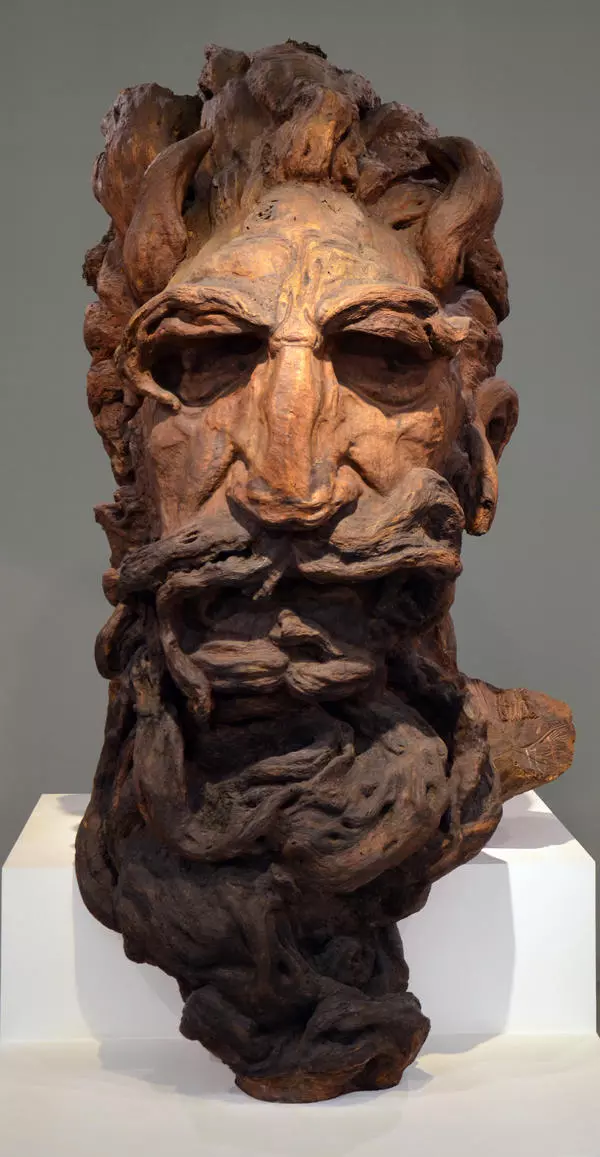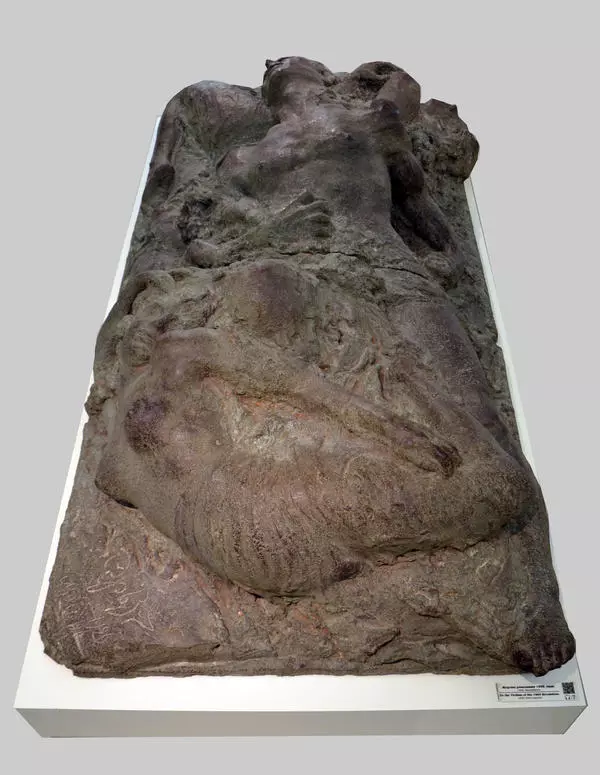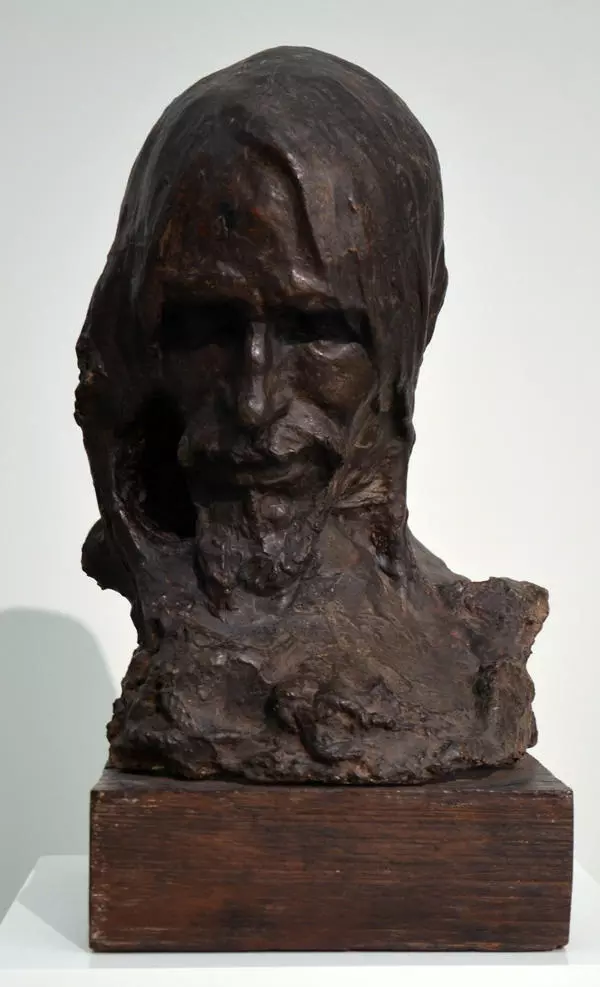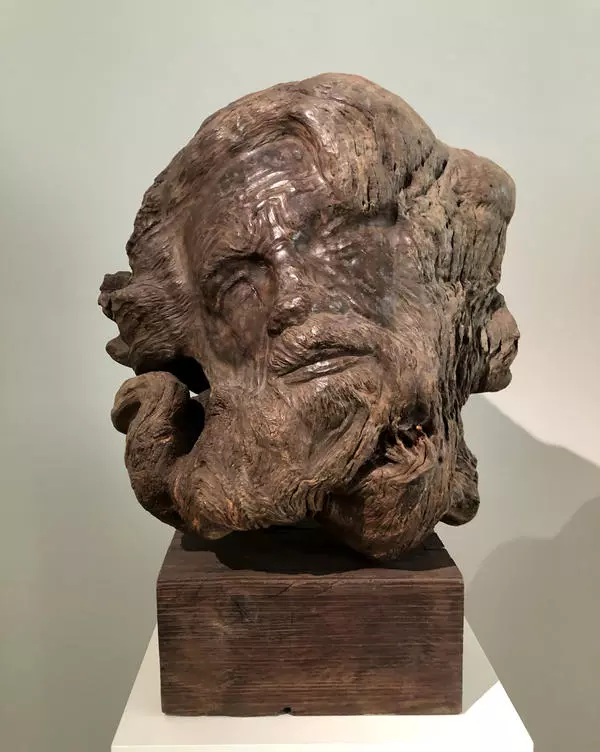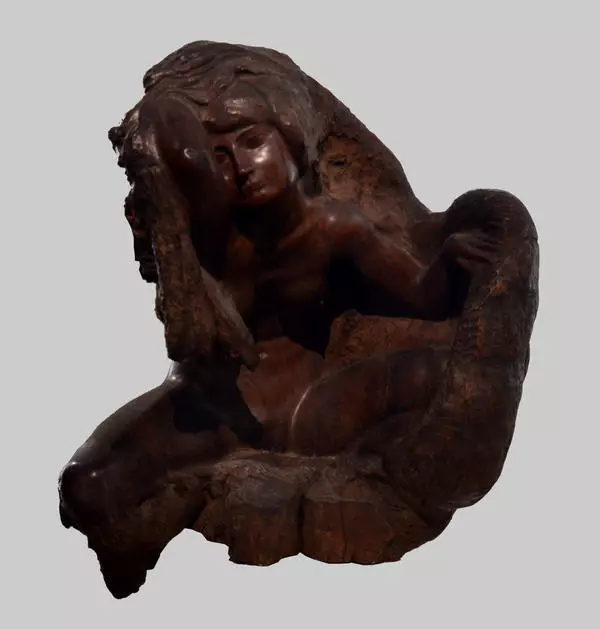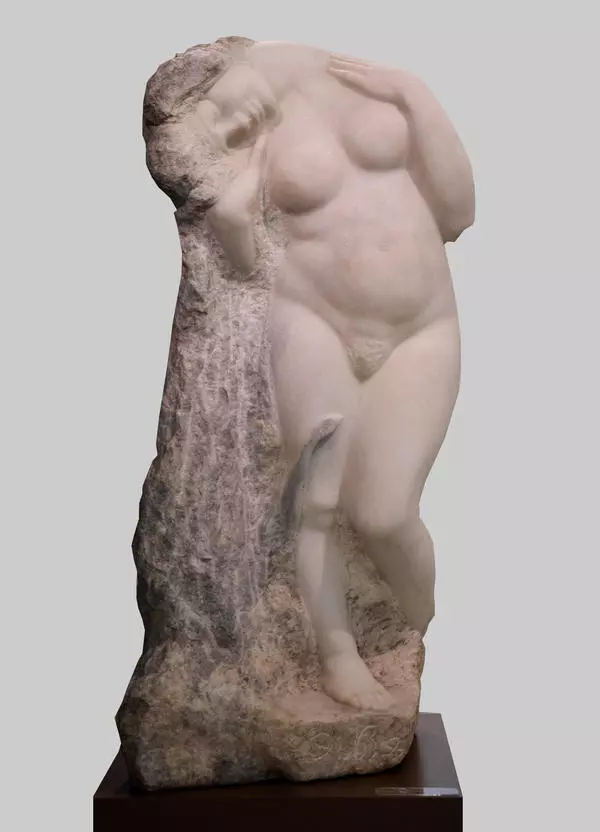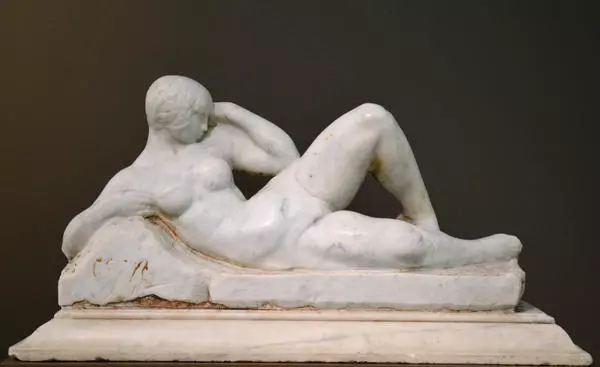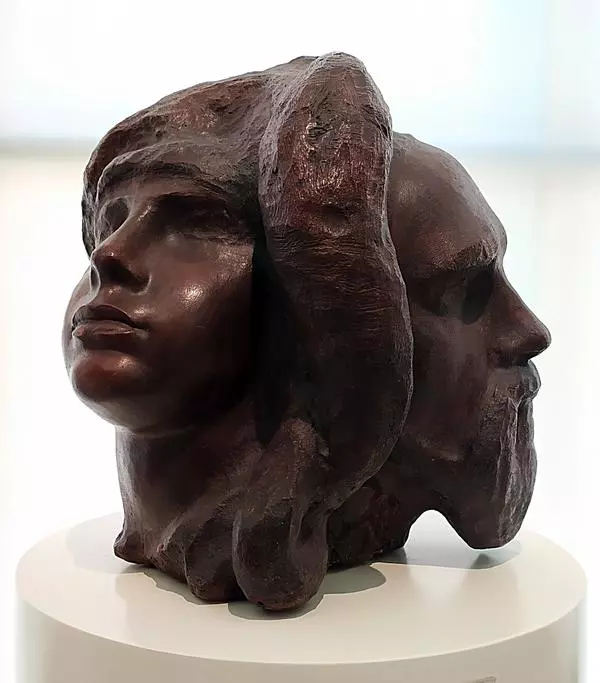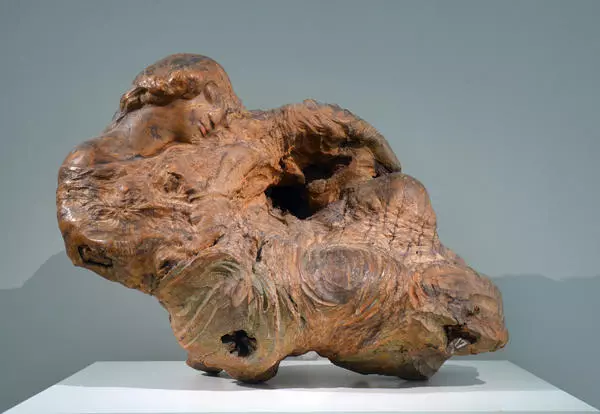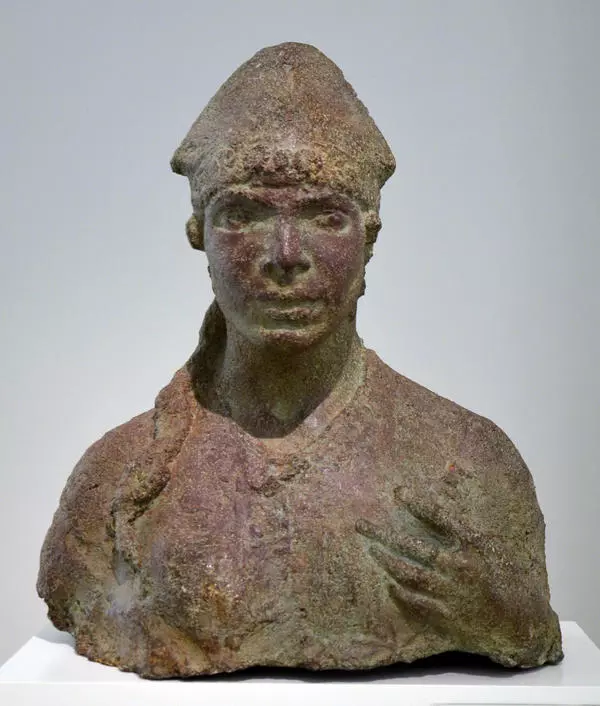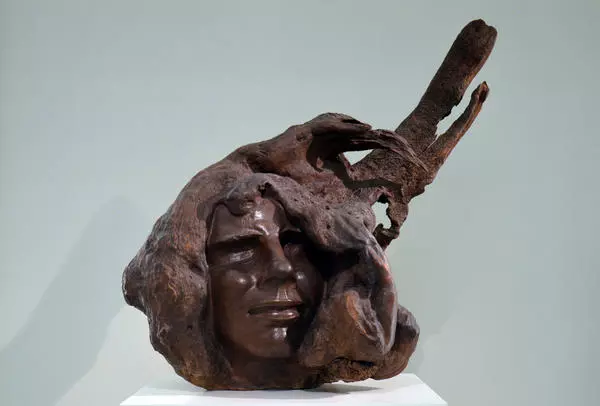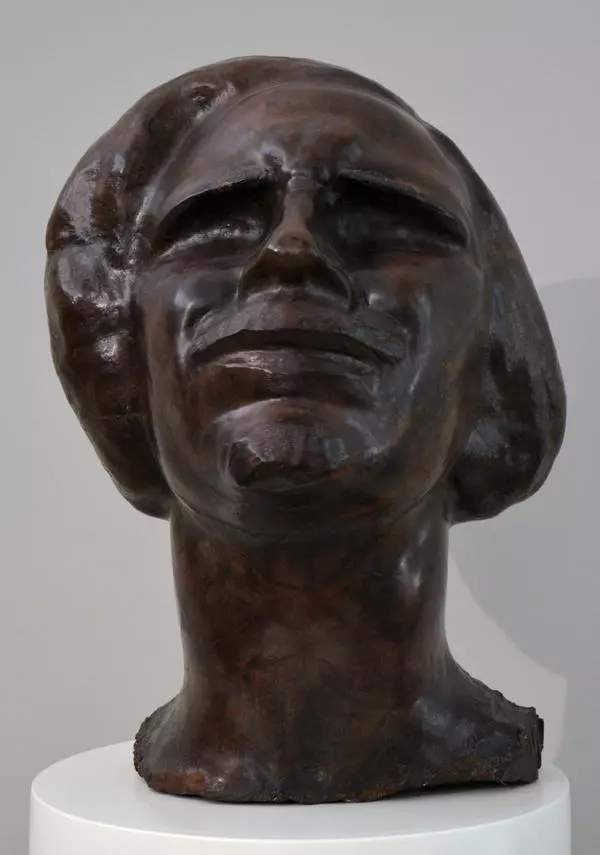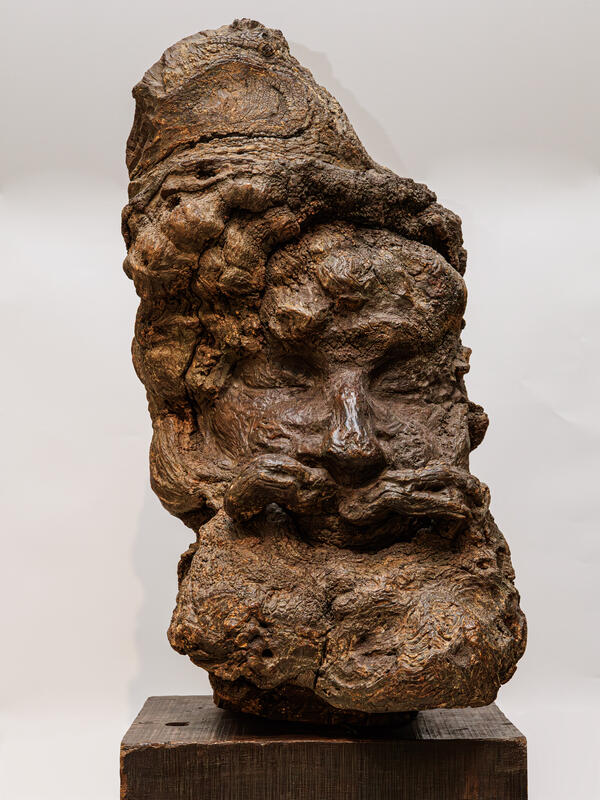Nun is a laconic but deeply psychological image. The surface of the sculpture is impeccably polished, it consists of smooth rounded lines, and the silhouette is soft, with no angles. Quebracho is a highly hard type of wood, brought from Argentina by the artist who developed his own technique of working with it. There are no fractures or cracks on the surface, all natural burrs are deleted. The method of treatment brings out the value and the natural beauty of the material and the sculpture looks virtually alive.
This technique creates the image of a woman detached from the wordly life, who is filled up with the inner spiritual intensity. Light and shadows play a significant part in the creation of a complete image: looking at this work of art from different perspectives, the viewer experiences a variety of sensations and breaks the boundaries.
The prototype for the sculpture, chosen by Erzia, was the actual nun, Theresa of Lisieux. It was only after her death that the young girl earned fame, due to her autobiographical book The History of a Soul, which had a huge circulation throughout Europe in the 1900. The message of the book A Modest Path is: even modest donations may bring one to holiness, feats need not be performed.
‘Love may be proved by your acts; how should I manifest my love? I cannot perform great deeds. The only way for me to prove my love is to bestrew flowers, and these flowers will be a small might, like every look of mine, word of mine and all my apparently mundane acts, which I am going to perform in the name of love’, Theresa wrote.
Stepan Erzia had a talent for depicting precisely the most subtle impulses of each of his sculptures’ heroes, with Nun as no exception. Despite different portrait characteristics, psychological structures, characters and attitudes, the inner similarity can be traced throughout his works.
That similarity is a tragic note of the artist’s self that is perceived in every creation of the sculptor. This distinctive feature of Stepan Erzia’s creative work stems from his life circumstances. Tribulations and emotional stress suffered by sensitive people sharpen their sensations dramatically and make them perceptive to the sufferings of the others. That is why it is the artists who drained to the drags the cup of bitterness, that create the art overwhelming us with its deeply dramatic nature. Having lived through a tense juncture of the turn of the centuries, and staying far from his motherland for many years after, Erzia created a comprehensive set of works of great emotional and expressive power.
This technique creates the image of a woman detached from the wordly life, who is filled up with the inner spiritual intensity. Light and shadows play a significant part in the creation of a complete image: looking at this work of art from different perspectives, the viewer experiences a variety of sensations and breaks the boundaries.
The prototype for the sculpture, chosen by Erzia, was the actual nun, Theresa of Lisieux. It was only after her death that the young girl earned fame, due to her autobiographical book The History of a Soul, which had a huge circulation throughout Europe in the 1900. The message of the book A Modest Path is: even modest donations may bring one to holiness, feats need not be performed.
‘Love may be proved by your acts; how should I manifest my love? I cannot perform great deeds. The only way for me to prove my love is to bestrew flowers, and these flowers will be a small might, like every look of mine, word of mine and all my apparently mundane acts, which I am going to perform in the name of love’, Theresa wrote.
Stepan Erzia had a talent for depicting precisely the most subtle impulses of each of his sculptures’ heroes, with Nun as no exception. Despite different portrait characteristics, psychological structures, characters and attitudes, the inner similarity can be traced throughout his works.
That similarity is a tragic note of the artist’s self that is perceived in every creation of the sculptor. This distinctive feature of Stepan Erzia’s creative work stems from his life circumstances. Tribulations and emotional stress suffered by sensitive people sharpen their sensations dramatically and make them perceptive to the sufferings of the others. That is why it is the artists who drained to the drags the cup of bitterness, that create the art overwhelming us with its deeply dramatic nature. Having lived through a tense juncture of the turn of the centuries, and staying far from his motherland for many years after, Erzia created a comprehensive set of works of great emotional and expressive power.
